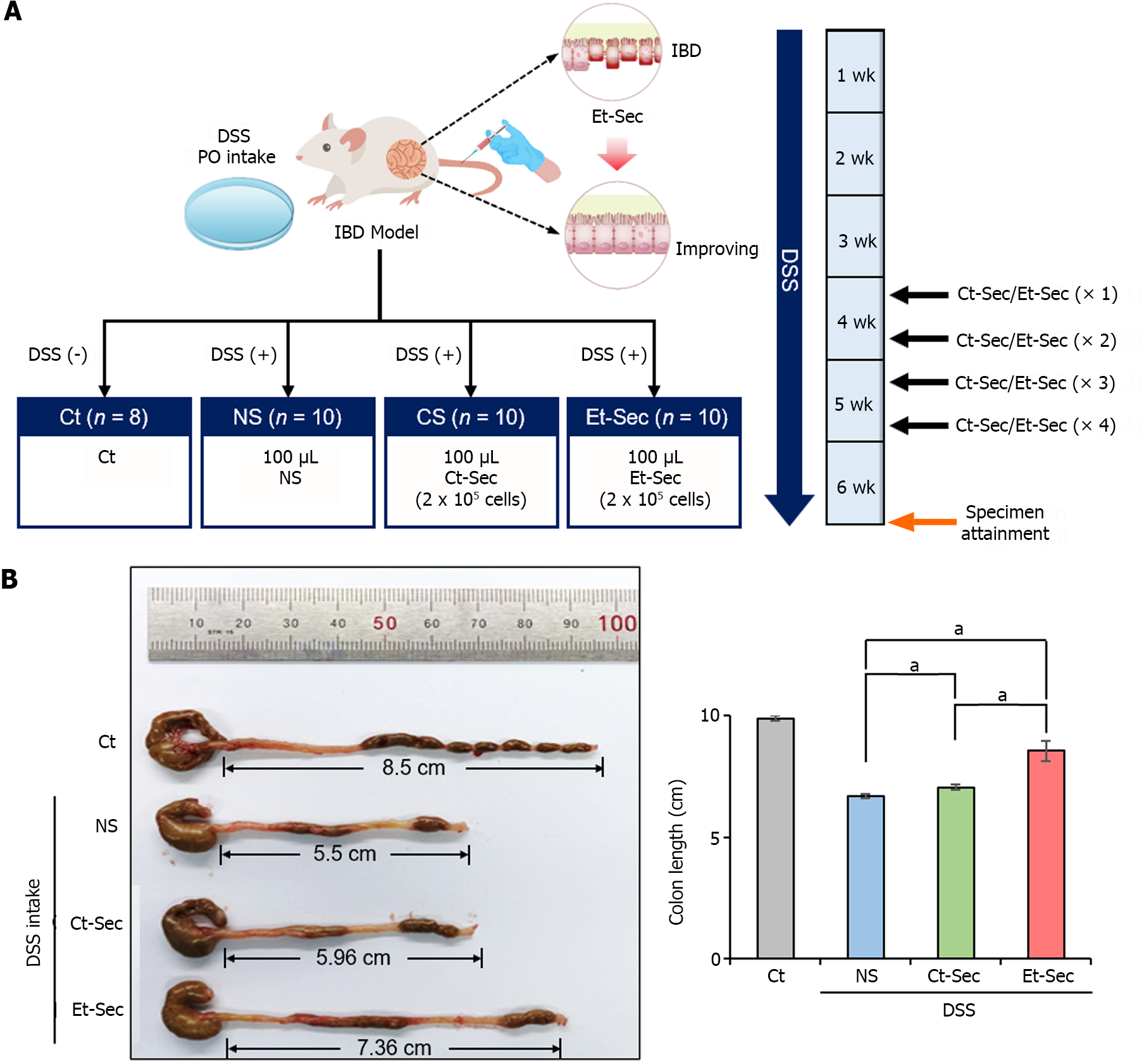Copyright
©The Author(s) 2024.
World J Gastrointest Surg. Mar 27, 2024; 16(3): 882-892
Published online Mar 27, 2024. doi: 10.4240/wjgs.v16.i3.882
Published online Mar 27, 2024. doi: 10.4240/wjgs.v16.i3.882
Figure 2 In vivo modeling and macroscopic anti-inflammatory effects of etanercept-secretome.
A: Experimental setup. The left panel illustrates the generation of the inflammatory bowel disease (IBD) mouse model and the configuration of treatment groups, while the right panel depicts the treatment process and tissue acquisition timing on a weekly basis; B: Determination of efficacy by evaluating bowel length. A representative illustration (left) and a comparison of each group (right) were presented. Bowel length served as an indicator of inflammation and gut health. The dextran sulfate sodium-treated groups demonstrated shorter bowel length compared to the control group. Both control-secretome (Ct-Sec) and etanercept-secretome (Et-Sec) groups exhibited significantly longer bowel length, with Et-Sec showing a more pronounced elongation compared to Ct-Sec (P < 0.05), indicating stronger anti-inflammatory effects in IBD mouse model. Values are presented as mean ± SD of three independent experiments. aP < 0.05. Et-Sec: Etanercept-secretome; Ct-Sec: Control-secretome; LPS: Lipopolysaccharide; TNF: Tumor necreosis factor; MCP-1: Monocyte chemoattactant protein-1; IL: Interleukin; IBD: Inflammatory bowel disease; DSS-treated group: Dextran sulfate sodium-treated group; ASCs: Adipose-derived stem cells.
- Citation: Kim SJ, Kim OH, Hong HE, Ju JH, Lee DS. Etanercept-synthesizing adipose-derived stem cell secretome: A promising therapeutic option for inflammatory bowel disease. World J Gastrointest Surg 2024; 16(3): 882-892
- URL: https://www.wjgnet.com/1948-9366/full/v16/i3/882.htm
- DOI: https://dx.doi.org/10.4240/wjgs.v16.i3.882









